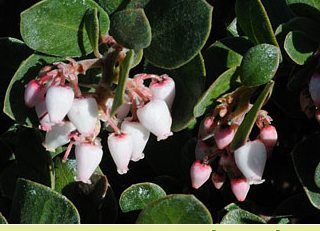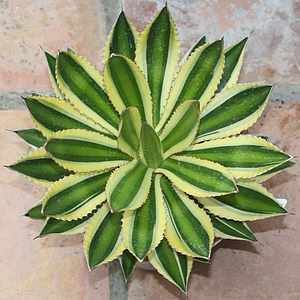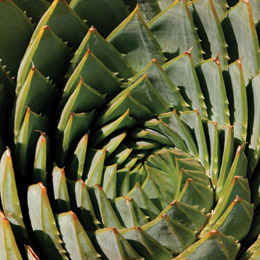Reap Profits During Drought
by Julie P. Newman, James A. Bethke and Steve Tjosvold
California's historic drought continues to pose challenges for the greenhouse and nursery industry, especially for growers who produce plants for outdoor use. Water restrictions have resulted in fewer landscaping projects and many home owners have scaled back their garden projects, resulting in fewer sales of outdoor plants. Scott Klittich, chairman of the board of the California Association of Nurseries and Garden Centers (CANGC), estimates that there was a 20 to 25% decrease in business across the board in spring sales (McClellan 2015a), which historically is the most lucrative period for the industry. Moreover, even though most of the state’s growers have already cut down on water use, higher water rates and restrictions on water usage have forced many nurseries to make additional capital-intensive renovations to their irrigation systems. Never-the-less, despite all of the problems that the drought has posed for nursery growers, there are still ways to make a profit.
Grow and Market More Drought-Tolerant Crops
Some nurseries that produce outdoor plants have actually benefitted from the drought and report an increase in production and sales. These are nurseries that specialize in drought-tolerant plants and nurseries that have a broad range of plants but have stepped up production of drought-tolerant plants. Many drought-tolerant plants used in gardens and landscapes originate from areas around the world where Mediterranean climate predominates: coastal California, central Chile, the Western Cape of South Africa, southern and southwestern Australia, and around the Mediterranean basin (Gildemeister 2004). To obtain more information on how production of these drought-tolerant plants is affecting sales, we contacted the managers of four visionary nurseries: Suncrest Nurseries Inc., San Marcos Growers, Plug Connection, and Sierra Azul Nursery and Gardens.
Suncrest Nurseries, a wholesale nursery situated near Watsonville, offers a diverse range of plants from the five Mediterranean climate regions. Horticultural traditions of growing native plants at this nursery (fig. 1) stretch back 137 years to their origin as the Leonard Coates Nurseries. Two years ago, Suncrest opened up a business called Meadowland to provide lawn alternatives and contract growing for projects, including living roofs. Indirectly, lawn conversion rebates are significantly benefitting this nursery. “The drought has been a boon to business, and our production is way up,” says Jim Marshall, general manager of Suncrest.
San Marcos Growers, a wholesale plant nursery located in the eastern Goleta Valley in Santa Barbara, also specializes in growing plants appropriate to California's Mediterranean climate. This includes many California native plants, as well as vines, trees, shrubs, ferns, perennials, succulents, ornamental grasses and grass-like plants from other areas around the world. Currently there are about 20 acres in nursery production with an additional two acres dedicated to cutting and demonstration gardens. The eight demonstration gardens allow customers to visualize how mature plants from Mediterranean climates look in garden settings, which helps to promote sales. The nursery also maintains extensive online information about plants produced in the nursery, as well as recommended resources.
“Drought is one of our salesmen,” claims Randy Baldwin, a partner and general manager of San Marcos Growers. “This has especially been the case this year. All of the new water regulations, media attention and lawn replacement rebates is making 2015 a banner year for us,” he says.
Baldwin believes that the reason the nursery has continued to be successful is because they made the decision early on to specialize in plants from Mediterranean climate regions and succulents — plants that are adaptable to California gardens. Just a few years prior to the incorporation of the business in 1979, California suffered from a drought that kick-started the state’s Xeriscape movement. Baldwin’s participation in Xericape seminars and the Water Use Classification of Landscape Species (WUCOLS) committee made it clear to him that San Marcos Growers should focus on plants that require minimal irrigation. “We certainly were not the only nursery involved in promoting what became known as drought-tolerant or ‘water-wise’ plants but we were certainly in a minority of those actively promoting these plants,” Baldwin says.
Baldwin studied California native plant taxonomy and field botany at UC Santa Barbara, and this interest in native flora also led to an appreciation of plants from other Mediterranean climate regions. “From my own travels and connections with people involved in horticulture we have steadily been able to increase the number of plants that are suitable to being grown in California without needing regular irrigation, particularly native Californian, Australian and South African plants,” he says.
Over the years, San Marcos Growers has been steadily weaning out of production plants that do not do well when they are irrigated in the nursery only once every week or two. As a result, succulents currently comprise 30% of the current collection of plants (fig. 2), representing 492 different taxa. Succulents forgive missing an occasional irrigation, and Baldwin professes an affinity with these plants because there is also “an odd and wonderful diversity within the group.” This is a fascination many of the nursery’s customers share, and Baldwin says he has witnessed “a growing addiction to succulent plants.” In response, the number of succulents San Marcos Growers produces has steadily increased over the years. “In 1980 we listed 4 succulents in our catalog, which represented less than 1% of the plants we were growing at that time,” Baldwin says. “In comparison, by 2012, we had 424 succulents in production, which was 26% of the plants we then produced.”
Plug Connection production manager Gregg Opgenorth also reports strong sales of succulents during the drought. Established in Vista in 1987, the Plug Connection produces plugs and liners in over 350,000 square feet of greenhouse space. This nursery serves an extensive network of 34 brokers, supplying a complete range of annuals, perennials, grasses, herbs and vegetables from seed and cuttings. As part of the broad palette of products supplied, there are over 100 types of succulents in a diverse array of colors, textures and shapes to meet the demands of retail and wholesale nurseries, garden centers and landscape professionals for water-wise solutions (fig.3). “As a propagator, our plant selections are driven by customer demand. We have a good succulent program that continues to do well as a result of demand for drought-tolerant products,” Opgenorth says.
Sierra Azul Nursery and Gardens, located in the Pajaro Valley in Watsonville, is a grower/retail nursery that specializes in plants from the five Mediterranean-climate regions of the world. In addition to a retail sales area, the nursery features two acres of demonstration gardens that promote the use of drought-tolerant plants in aesthetic water-conserving gardens and landscapes. The demonstration gardens attract many visitors: gardeners come for ideas and inspiration, retail nursery customers come to see plants as they look full-sized in a garden setting and landscapers bring their clients (fig. 4). The nursery also offers design and consultation services to their customers.
Jeff Rosendale, owner of Sierra Azul Nursery and Gardens, says that the nursery has increased production of drought-tolerant varieties such as manzanitas, salvias, California natives and proteaceous species in response to the drought. “We are [also] focusing more on lavender production and a small lavender farm,” Rosendale says. In addition to promoting the use of drought-tolerant plants and practices, he hopes that the lavender farm will “promote tourism to our site.” As a result of the drought, there is a high demand for the nursery’s design and consulting services. “We are consulting with customers on xeriscape plant selection, design and layout for lawn removal conversions, and water district rebate programs in Santa Cruz, San Benito, Monterey and Santa Clara counties,” Rosendale says.
Help Educate Plant Consumers
The California nurseries we contacted for this article are all financially benefitting from the drought because they specialize in plants that are drought tolerant or because they have increased production of an already-strong succulent program in response to consumer demand. Many wholesale container nurseries produce drought-tolerant plants because there has always been a high demand for these plants from retail and landscape customers, but they also grow other plants commonly found in California gardens and landscapes that require more water. So, what can you do to offset sagging sales of plants that are not among the most drought-resistant? Should you cease production of these plants? Should you simply cut back on the size of plant production areas? And how do you help your customers reach consumers who have completely stopped gardening?
Probably the best solution for declining plant sales during drought is to help retail and landscape professionals educate their clients. Everyone needs to pitch in to change the public perception that equates drought with foregoing plants. Scott Klittich has urged CANGC members to have conversations with their customers about using water conserving practices. In addition to his CANGC responsibilities on the board of directors, Klittich manages Otto and Sons Nursery, a 22-acre wholesale/retail nursery in Fillmore that produces a large selection of roses, fruit trees and berries. These traditional types of plants still have a place in gardens and landscapes when water-conserving practices are used. Klittich uses e-newsletters to provide his customers with tips for conserving water. “Nurseries are the go-to resource for that information,” he says. “Every nursery I’ve been to, those that are promoting that they are the place to find that information are more successful than those that are just sitting back” (McClellan 2015b).
David House, CEO of Village Nurseries, a wholesale operation based in Orange with 900 acres of growing facilities in California and four landscape centers, also believes in the importance of outreach. “People are concerned about spending their discretionary dollars on plants for two reasons: Will they live? And is it the right thing to do?” House says in an interview for Nursery Management magazine (McClellan 2015a). Moreover, House is uneasy with the idea of drought-tolerant plants conjuring up “visions of arid landscapes with little more than cacti, succulents and rocks.” This is the reason he is launching a Save Water, Stay Green campaign, which will use news media, the Village Nurseries website and e-newsletters to get the message out that “that buying plants and having a beautiful landscape is still easy to do.”
Australia championed this philosophy that “you can have your cake and eat it too” during a 13-year drought, when many beautiful gardens were created and maintained. One example is the Adelaide Botanic Garden, where careful plant selection and appropriate irrigation design conserved significant amounts of water (Adelaide and Mount Lofty Ranges Natural Resources Management Board 2014). An image of the Adelaide Botanic Garden can be found on the Gardening in Mediterranean climates website (see References, below).
The University of California is a good source of information for home gardeners and landscaping professionals, and nurseries can use this information to educate their clients. Many of these publications with pertinent information related to water conservation are listed in the reference section below, and most can be downloaded for free at the UC Agriculture and Natural Resources publications website. In addition, the UC Davis Center for Urban Horticulture (CUH) maintains a “Landscaping Resources During Drought” web page with resources that nurseries can use for their outreach (see References).
Continue Conserving Water
Because water rates have increased and may be one of the highest operating costs (Gallagher 2013), obviously it is important to ensure that a broad spectrum of water-conserving measures is implemented in the nursery. Not only will this save water, but in the long run it will also reduce costs.
Suncrest Nurseries has reconfigured their irrigation system to improve distribution uniformity and adjusted their soil mix to improve water holding capacity in response to the drought. “Adding earthworm castings gives our mix a higher cation-exchange rate, allowing us to reduce the fertilizer charge and enhance the safe use of recycled water from our 22-year-old water recycling system,” Marshall says. “We also pay more attention to consolidating crops so we don’t water areas that are sparsely populated.”
McClellan (2015a) provides several other examples of water-conserving technologies and practices in California nurseries. This has included converting more acreage to drip irrigation systems, incorporating pulse irrigation and recycling water, as well as making necessary adjustments to incorporate the use of reclaimed water (Merhaut 2015). Many nursery growers have conserved water as a result of implemented water quality improvements to comply with State Water Resources Control Board agricultural conditional waiver requirements (Mangiafico et al. 2010). Although most growers have already cut back significantly on water use, it is important to conduct an annual irrigation audit to evaluate the irrigation program and plan for appropriate future improvements (Newman et al. 2008).
Julie Newman is Emeritus Floriculture and Nursery Crops Advisor, UC Cooperative Extension, Ventura and Santa Barbara Counties; James A Bethke is Farm Advisor for Nurseries and Floriculture, UC Cooperative Extension, San Diego and Riverside Counties; and Steve Tjosvold is Environmental Horticulture Advisor, UC Cooperative Extension, Santa Cruz and Monterey Counties.
References
Adelaide and Mount Lofty Ranges Natural Resources Management Board. 2014. Adelaide gardens: a planting guide. Natural Resources, Government of South Australia. http://www.stateflora.sa.gov.au/files/c179bb5e-c7a1-4b8d-acbc-a27a00d7d298/adelaide-gardens-planting-guide-bro.pdf.
Gallagher A. 2013. California drought may create water crisis. Greenhouse Grower, March 27, 2014. http://www.greenhousegrower.com/uncategorized/california-drought-may-create-water-crisis/.
Gardening in Mediterranean climates website, http://gimcw.org/.
Geisel PM, Unruh CL. 2004. Lavenders for California gardens. Oakland: University of California Agriculture and Natural Resources Publication 8135. http://anrcatalog.ucdavis.edu/pdf/8135.pdf. Free.
Geisel PM, Unruh CL. 2001. Water conservation tips for the home lawn and garden. Oakland: University of California Agriculture and Natural Resources Publication 8036. http://anrcatalog.ucdavis.edu/pdf/8036.pdf. Free.
Gildemeister H. 2004.What is a Mediterranean climate? Mediterranean Garden Society. http://www.mediterraneangardensociety.org/climate.html.
Harivandi A, Baird J, Hartin J, Henry M, Shaw D. 2009. Managing turfgrasses during drought. Oakland: University of California Agriculture and Natural Resources Publication 8395. http://anrcatalog.ucdavis.edu/pdf/8395.pdf. Free.
Hartin J. 2001. Lawn watering guide for California. Oakland: University of California Agriculture and Natural Resources Publication 8044. http://anrcatalog.ucdavis.edu/pdf/8044.pdf. Free.
Hartin J, Geisel P, Harivandi A, Elkins R. 2014. Sustainable landscaping in California. Oakland: University of California Agriculture and Natural Resources Publication 8504. http://anrcatalog.ucdavis.edu/pdf/8504.pdf. Free.
Landscaping Resources During Drought. California Center for Urban Horticulture, UC Davis. http://ccuh.ucdavis.edu/drought.
Lenz LW, Dourley J. 1981. California Native Trees and Shrubs. Rancho Santa Ana Botanic Garden, Claremont, CA.
Mangiafico SS, Newman JP, Merhaut D, Faber B. 2010. University of California program to evaluate water quality management practices at cooperating agricultural sites. J. of Extension 48(2). Article Number 2IAW3. http://www.joe.org/joe/2010april/pdf/JOE_v48_2iw3.pdf.
Mangiafico SS, Newman J, Mochizuki M, Zurawski D, Merhaut D, Faber B. 2010. Nurseries survey in Southern California adopt best practices for water quality. California Agriculture 64(1): 26-30 http://ucce.ucdavis.edu/files/repositoryfiles/ca6401p26-73586.pdf.
McClellan M. 2015 (a). Feeling parched: As California’s historic drought continues, growers are squeezing every last drop into their businesses, Part 1. Nursery Management. July digital issue. http://www.nurserymag.com/nm0615-California-growers-drought-issues.aspx.
McClellan M. 2015 (b). Adapt or dry up: California growers face the challenge of marketing plants during a historic drought, Part 2. Nursery Management. August digital issue. http://www.nurserymag.com/nm0715-water-conservation-drought-california-growers.aspx.
Merhaut D. 2015. Get Cultured: Reclaimed water use in nursery production. UCNFA News 18(3):8-10. http://ucanr.edu/sites/UCNFAnews/newsletters/Download_UCNFA_News_as_PDF53795.pdf.
Newman J, Mellano V, Robb K, Haver D. 2008. Conducting an environmental audit, Chapter 9. In: Newman J. (Ed) Greenhouse and Nursery Management Practices to Protect Water Quality Oakland: University of California Agriculture and Natural Resources Publication 3508. http://anrcatalog.ucdavis.edu/Details.aspx?itemNo=3508
Otto and Sons Nursery website, http://www.ottoandsons-nursery.com/.
Perry B. Landscape Plants for California Gardens. 2010. Land Design Publishing, Claremont, CA.
Plug Connection website, http://www.plugconnection.com/.
San Marcos Growers website, http://www.smgrowers.com/.
Schwankl L, Evans R, Faber B. 2014. Irrigation management practices. In: Newman J. Container Nursery Production and Business Management Manual. Oakland: University of California Agriculture and Natural Resources Publication 3540. http://anrcatalog.ucdavis.edu/Details.aspx?itemNo=3540.
Schwankl L, Prichard T. 1999. Drip Irrigation in the Home Landscape. Oakland: University of California Agriculture and Natural Resources Publication 21579, Publication. http://anrcatalog.ucdavis.edu/Details.aspx?itemNo=21579.
Sierra Azul Nursery and Gardens website, http://www.sierraazul.com/.
Suncrest Nurseries Inc website: http://www.suncrestnurseries.com/.
Village Nursery “Save Water, Stay Green Campaign” https://www.villagenurserieslc.com/wp-content/uploads/2015/06/Village-Nurseries-Launches-Save-Water.pdf.
Figures

Fig. 1. Among Suncrest Nurseries’ collection of native plants are 36 varieties of manzanita. Shown here: Arctostaphylos edmundsii 'Rosy Dawn'.

Fig. 2. Approximately 30% of San Marcos Growers’ current collection of plants are succulents. Shown is Agave lophantha 'Quadricolor' (quadricolor century plant).

Fig. 3. Plug Connection’s Tessera Succulents include more than 100 varieties of low water-use succulents in 72- or 102-trays.

Fig. 4. Each, year Sierra Azul Nursery receives many visitors to their demonstration gardens that promote the use of drought-tolerant plants. The whimsical statues are part of the charm.












